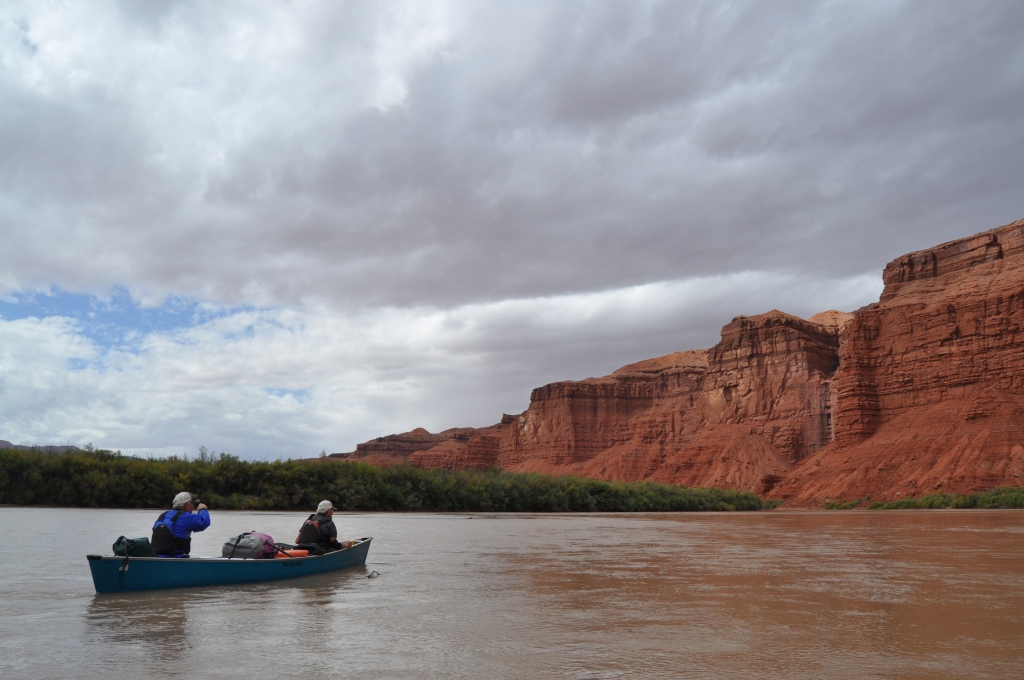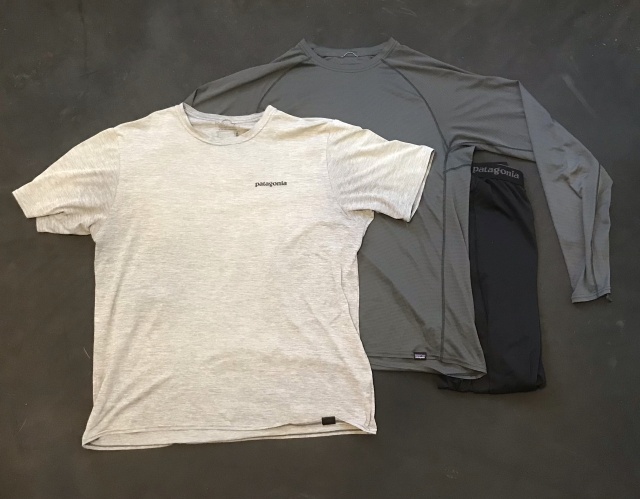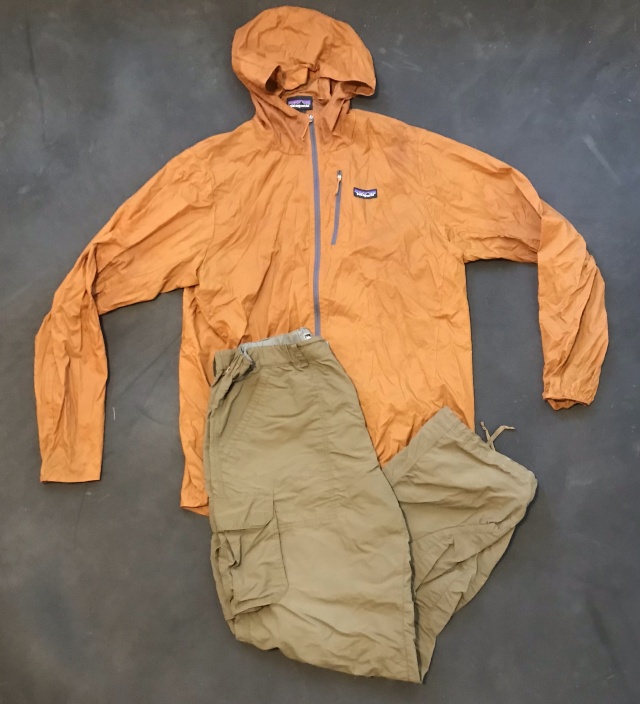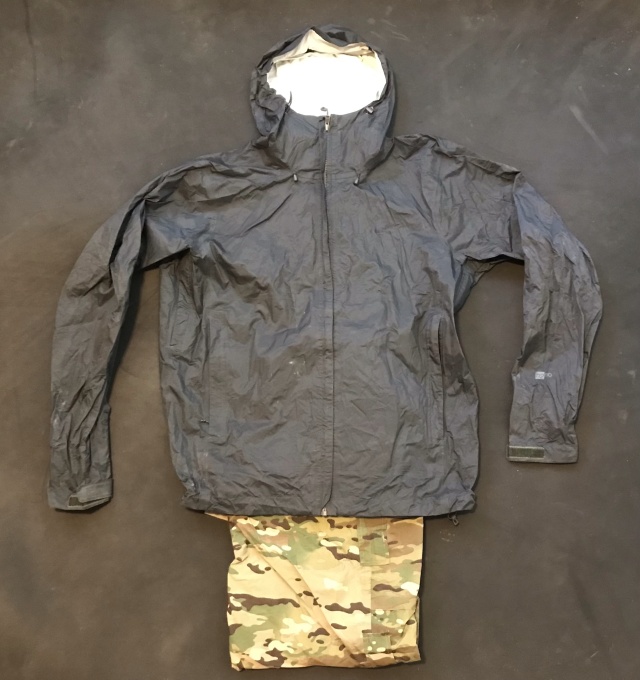
What do you pack for a week-long desert canoe trip?
A couple weeks ago I had a chance to join a trip on the San Juan River in Utah. It was a last minute trip and I had to throw clothes into my bag in a hurry. The Simple Clothing System provided a framework that made this a snap. I needed a range of clothing that would keep me comfortable from sunny highs near 90 degrees to cool nights in the 40’s. Here’s what I packed.

Layer 1: Baselayer
My go-to baselayer for all conditions is Silkweight Capilene. Long sleeve top and bottoms went into the pack along with a silkweight T-shirt. I packed a long sleeve cotton dress shirt for sun protection and would use the Capilene T as an alternative if this shirt got wet. A pair of baggies shorts rounded out my everyday wear.

Layer 3: Midweight Insulation
Somewhere between the airport and the put-in I lost my Mountain Hardwear Monkey Man fleece jacket. This meant that my only insulation for the trip was a Patagonia Micro Puff hooded jacket. This is not the kind of active insulation that I recommend as part of the clothing system. It’s a light synthetic puffy jacket that is better for sedentary use than hiking. Fortunately, it only came out in camp once we had stopped for the day, so I didn’t ever sweat it up. Given the choice I would have preferred the fleece jacket. I wonder where that went…

Layer 4: Wind Shell
Easy choice. Houdini Jacket and my old pair of synthetic canoeing pants. These pants are large enough to layer over Baggies and long underwear. The Houdini is sized to fit over a fleece. It does an excellent job of turning the wind and doubles as sun and bug protection.

Level 6: Waterproof/Breathable Shell
Rain gear was a lightweight Patagonia H2No jacket and a pair of surplus Gore-Tex pants. The jacket came out on the first day of the trip as we loaded canoes in a brief downpour. If the rain had continued I would have begun the trip with pants, but thankfully the weather blew through by the time we put onto the river.

Odds and Ends
I took a pair of Powerstretch gloves, a ball cap and a wooly hat. The wooly hat got some use on the cool nights. The gloves never did, but if temperatures had dropped into the low 40’s they would have been nice to have. Better safe than sorry.
Field Comfort
This combination of clothes kept me comfortable on the water and in camp. At night I slept in my Outdoor Research Helium Bivy with my DIY Climashield quilt. The third night I slept out without the bivy and pulled on the Micro Puff in the middle of the night when the wind picked up. Gloves and silkweight baselayers didn’t get used but would have been necessary if the temperatures had dropped a bit lower. My cotton dress shirt was the perfect choice for sun protection. It was more comfortable than a synthetic alternative and in the dry desert air it dried fairly quickly when wet. For more humid conditions I do prefer a synthetic button-up shirt, but in the desert a lightweight cotton shirt is an excellent choice.
In all I had everything that I needed for comfort on the trip and nothing in excess. Using the Simple Clothing System as a framework I was able to throw together the perfect set of backcountry clothes with a minimum of fuss.
If you’re interested in learning more about the Simple Clothing System you’ll find a link to the first article here: https://kitchi-gami.com/2018/03/24/a-simple-outdoor-clothing-system/
The above article contains links to each of the components of the system. You’ll find all the articles that reference the system by clicking here to open the Simple Clothing System tag.
If you enjoyed this post, please consider subscribing to our blog by using one of the links in the menu on the right side of the screen. On your mobile device you’ll find the links if you scroll to the bottom of the page. Thanks!
